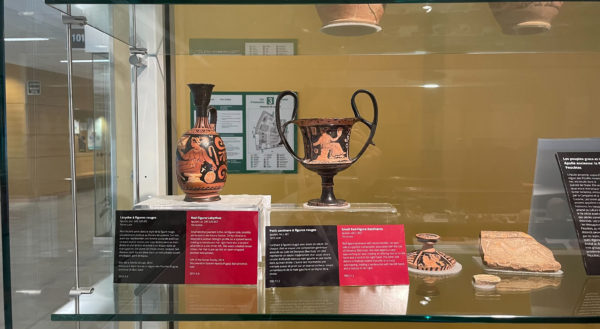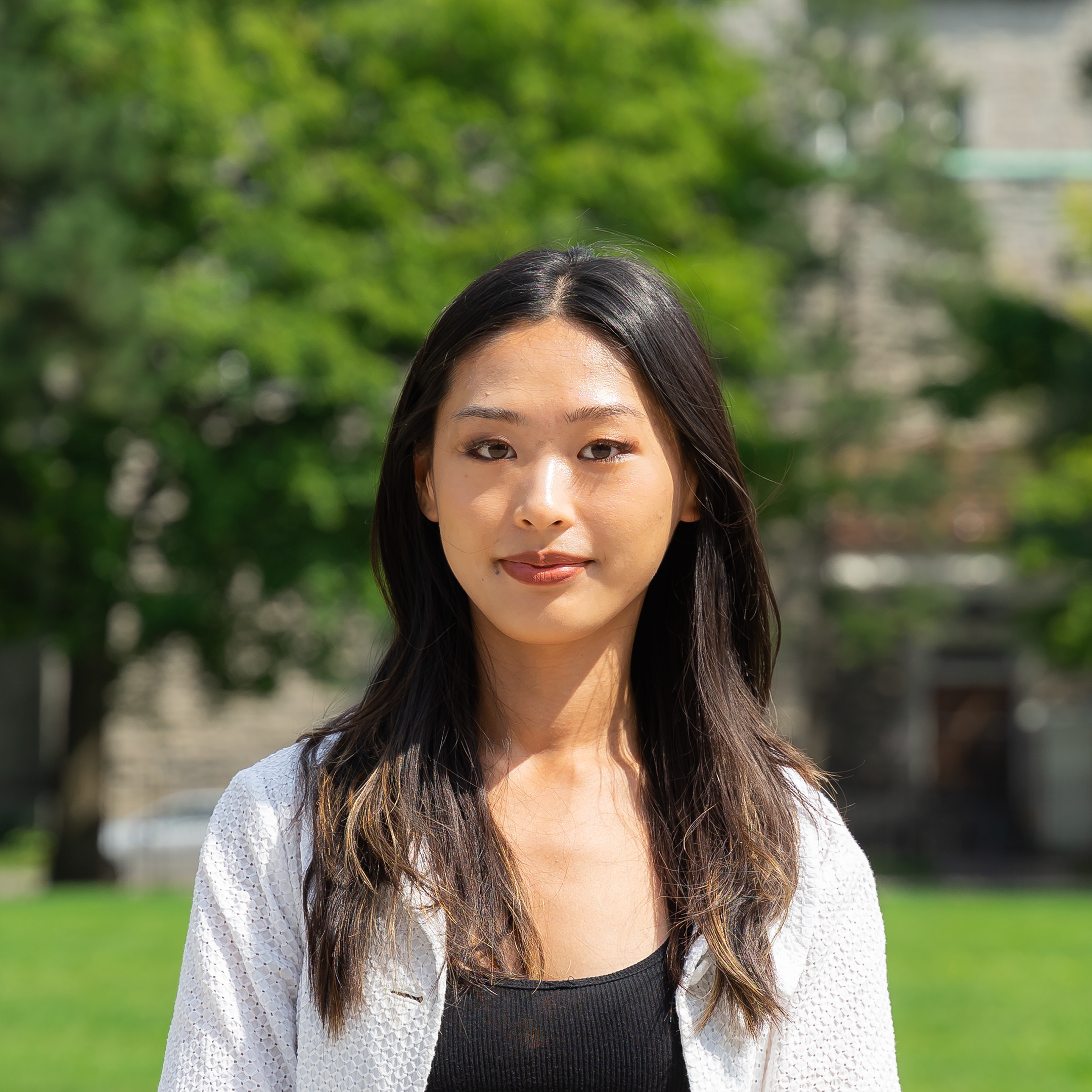Exploring ancient societies through artifacts
The department of classics at the University of Ottawa harbours a special place for archaeological discovery on campus. Since 1975, the Museum of Classical Antiquities has curated and displayed a collection of diverse artifacts from different regions of the Ancient Mediterranean.
As you enter the museum, you’re faced with display cases ranging from pottery to everyday objects. In one section, the museum displays an extensive collection of vases from the Early Cypriote, Etruscan, Roman, and North African regions. One of the museum’s oldest artifacts, a Cypriot terracotta juglet from 2100-1900 BCE, designed with straight and curved incised lines, sits in this display case.
The pottery showcased at the museum is painted and incised with a range of colour and forms, some in the red-figure or black-figure style and others with simple linear designs. Earlier pottery primarily focuses on geometric designs, however, as time goes on the subject matter of battle emerges. Particularly by the Classical Period, pottery begins to reflect Greek and Roman mythology.
Sophie Vigneux, one of the museum’s curatorial interns, explained how the pottery across regions is unique, but also greatly enmeshed with one another.
“Everyone had an influence on each other. You can see similar motifs, themes, [and] forms of pottery across literally all of the Mediterranean because it was one of the first times that such a vast area was so connected by trade. And so, we try not to think of any culture in its own sort of vacuum.”

Vigneux then referenced several cases placed in the middle of the museum space displaying everyday objects such as jewelry, makeup boxes, clothing textiles, and cooking tools. The familiarity of these artifacts reminding viewers that although humans change over time, we remain the same in many ways, whether it’s through our cultural practices or simply our daily routines.
A major collection at the museum is their exhibition of ancient coins, Roman and some Greek, spanning from the advent of the Roman Empire until the Byzantine period.
Vigneux mentioned that they are trying to digitize this collection in order to increase its visibility. She explained that digitizing artifacts can be helpful, as it allows viewers to see intricate details on the coins that they may not be able to see with the naked eye.
In two corners of the museum space, two large amphoras stand out and sit across the room from one another. Researchers have deduced the stories behind the amphoras, and other artifacts, through information about where they were discovered and the stylistic elements of the object. One was used to transport garum, a type of fish sauce, and was discovered in the sea, where it likely fell from a boat.
Exploring the Museum of Classical Antiquities is an enlightening experience allowing visitors to reflect on and learn about the mass of civilizations that came before them. Thanks to the museum’s passionate team of students and professors, visitors can discover and reflect on the living and often enigmatic remnants of Ancient Greek and Roman societies.
To learn more about the museum and the archeology field, students can attend Archaeology Day, an event hosted by the museum in partnership with the Classics and Religions Students’ Association, on Thursday, Oct. 13.
The Museum of Classical Antiquities is open Wednesday to Friday from 10 a.m. to 3 p.m., and it is located at Desmarais Building, room 3104.






